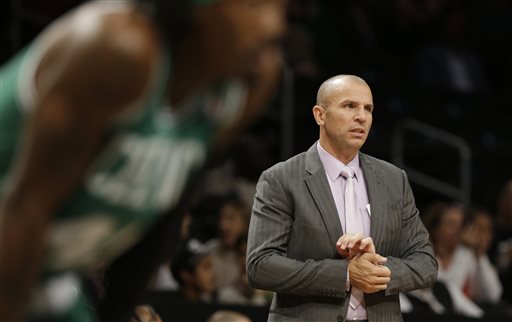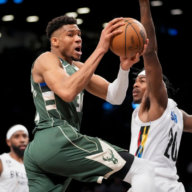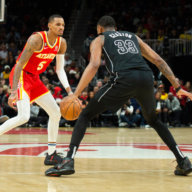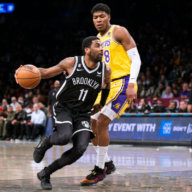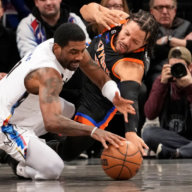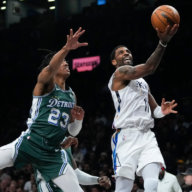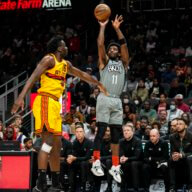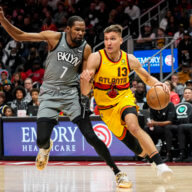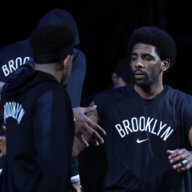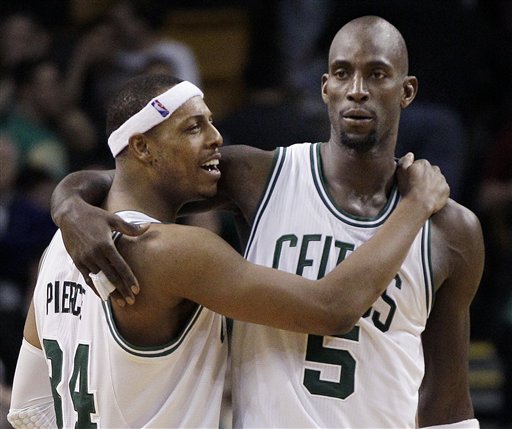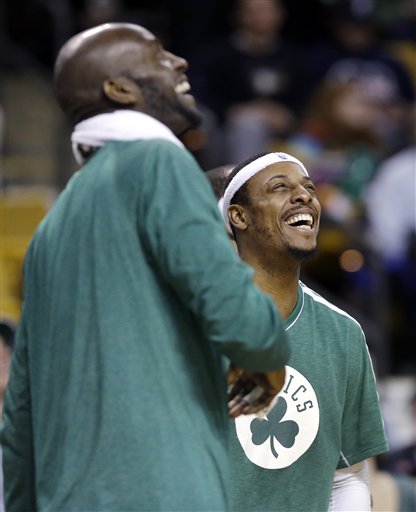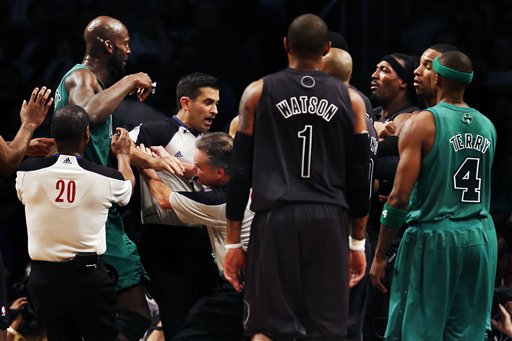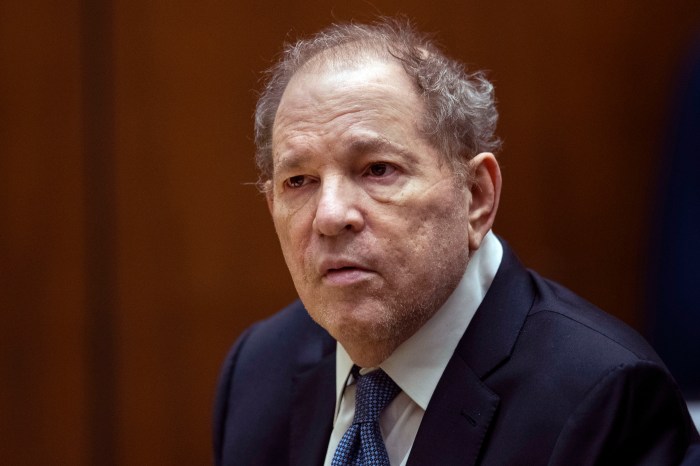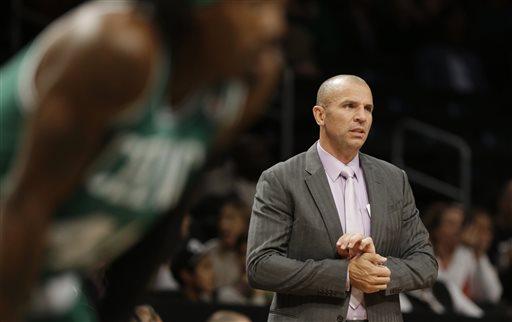
It’s no secret that the Brooklyn Nets made the trade for Kevin Garnett, Paul Pierce, and Jason Terry in July with championship aspirations in mind. The Nets aren’t looking towards the future; the roster is a group of veterans is “All In” to win now, as in this year. But if you’re looking to win now, why entrust a first-time head coach with your aging roster, one who has a steep learning curve as he navigates the ins and outs of coaching?
Except Jason Kidd isn’t like your average first-time coach. As Billy King said in July, he doesn’t take the responsibility lightly. He’s looking to expedite the curve as quickly as possible, both with intensive preparation and a star-studded cast of assistant coaches.
One of those coaches is Lawrence Frank, Kidd’s lead assistant and de facto defensive coordinator. Frank coached Kidd for much of his tenure in New Jersey, and designed the Boston Celtics top-shelf defensive schemes around Kevin Garnett. Kidd and Frank teamed up to put together a “gumbo” of defensive philosophies, one that the team’s still getting accustomed to.
One small difference from last season is Brooklyn’s commitment to a defensive scheme called “ICE,” a pick-and-roll coverage that doesn’t require the team to bring over an extra defender on a pick-and-roll that starts on the wing.
“We’ve been saying that from the beginning, the pick-and-roll we’ve been icing,” Kidd said. “We’ve been getting better each time taking the court.”
The ICE is simple: instead of the screener’s defender “showing” — jumping above the screener to cut off the ballhandler going towards the middle of the floor — he hangs back and defends against the baseline drive, while the defending guard works over and around the screen. It requires direct communication from the big defender, as he’s the one who sees the whole play develop. If executed correctly, the best shot the offense can get out of it is a pick-and-pop two-pointer, which isn’t an effective shot long-term (unless you’re Garnett).
“It’s just a matter of talking, having each other’s backs, and knowing where you are and what your responsibility is in the scheme,” Brook Lopez said about ICE.
“(The) defensive schemes are great,” Joe Johnson added of the overall concepts Kidd and Frank have devised. “We just have to go out and execute more than anything. Not think so much, but react. The last couple of games, we’ve been doing it.”
Johnson’s right: the Nets have allowed under 40% shooting in each of the last two games, and neither Philadelphia nor Boston did much damage in the paint. But those two teams are also lottery-bound franchises experimenting with odd lineups, so it’s hard to take too much from that.
The ICE is a deterrent that, when properly executed, puts the offense in a poor position to score. It isn’t an automatic pick-and-roll stopper, though: the Nets still need to play effective one-on-one defense to keep opponents from getting efficient shots. The Nets used the ICE scheme last year, but suffered from inconsistency: they only ICEd (or “downed,” as some teams call it) on occasion, and without the proper fundamentals, the Nets were open to getting burned even if they nullified the screen’s effect.
Still, Kidd’s cautiously content with how they’ve progressed on the defensive end. “We’re still not where we want to be, so there’s a lot more work to be done. But each time we’ve taken the floor we’ve gotten better.”

